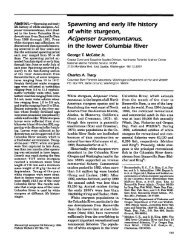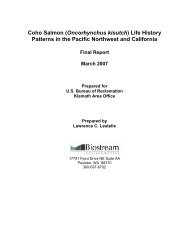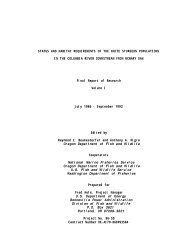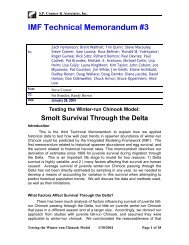STATE OF THE INDUSTRM REPORT - Outdoor Industry Association
STATE OF THE INDUSTRM REPORT - Outdoor Industry Association
STATE OF THE INDUSTRM REPORT - Outdoor Industry Association
Create successful ePaper yourself
Turn your PDF publications into a flip-book with our unique Google optimized e-Paper software.
internet/catalog: selection and price<br />
In 2004, Internet/catalog showed the strongest growth of all distribution channels,<br />
but Mountain Gear President, Paul Fish, says not to read too much into it. “Ten<br />
years ago I might have claimed I was driving the outdoor online business,” he says.<br />
“Today it’s driven simply by the fact that that’s what Target, Wal-Mart and EBay are<br />
doing.” Fish says there’s no great difference between the online shopper and the<br />
folks coming into his brick and mortar store in Spokane, except for one thing: “a<br />
whole chunk of online business happens simply because someone happens to find<br />
you, and you’ve got the product they want in stock.” Still, in the August ’03 to July<br />
’04 timeframe, Internet sales of outdoor product grew to comprise 16.3 percent of<br />
total outdoor product sales and they’re poised to keep growing.<br />
“While physical retail will always hold certain advantages<br />
over e-commerce — namely that customers can touch and<br />
feel the gear and try things on — even the most strident<br />
brick and mortar proponents understand the need to<br />
incorporate e-tail.” — Kim coupounas of golite<br />
Jim Holland, CEO of Backcountry.com, thinks that’s because an increasingly<br />
Internet-comfortable consumer finds value in the Web’s fast, easy and<br />
comprehensive offering. “Competent e-tailers are in a position to put all the most<br />
relevant information, from objective customer reviews to detailed features to<br />
comparative product specs, right in front of their customers,” he says. Holland’s<br />
“... research shows that customers who shop multiple<br />
channels tend to be bigger spenders and more integrated<br />
into the outdoors. they’re enthusiasts,<br />
which means we can all earn more of<br />
their business.” — paul fish of mountain gear<br />
// www.outdoorindustry.org<br />
feeling is that no one offers better customer service<br />
than the customer himself, provided he has access<br />
to the information he needs. For core consumers this<br />
may be true; average e-tail price points for specialty<br />
outdoor web sites run slightly higher than in-store<br />
specialty sales, indicating that the Web attracts a highend<br />
shopper. As well, Holland says, e-tailers can afford<br />
to carry niche products that have a limited audience<br />
or customer base, making Web retail more relevant to<br />
the core customer.<br />
“While physical retail will always hold certain advantages<br />
over e-commerce—namely that customers can<br />
touch and feel the gear and try things on,” notes Kim<br />
Coupounas, Cofounder and CEO of GoLite, “even the<br />
most strident brick and mortar proponents understand<br />
the need to incorporate e-tail.” There will always be<br />
people who research gear online and buy it in physical<br />
retail stores—a fact that specialty retailers like<br />
Adventure 16 are counting on. But surprisingly, that<br />
may not be as detrimental to dedicated online retailers<br />
as one might think. Mountain Gear research shows<br />
that customers who shop multiple channels tend to be<br />
bigger spenders and more integrated into the outdoors.<br />
“They’re enthusiasts,” says Paul Fish, “which means<br />
we can all earn more of their business.”











